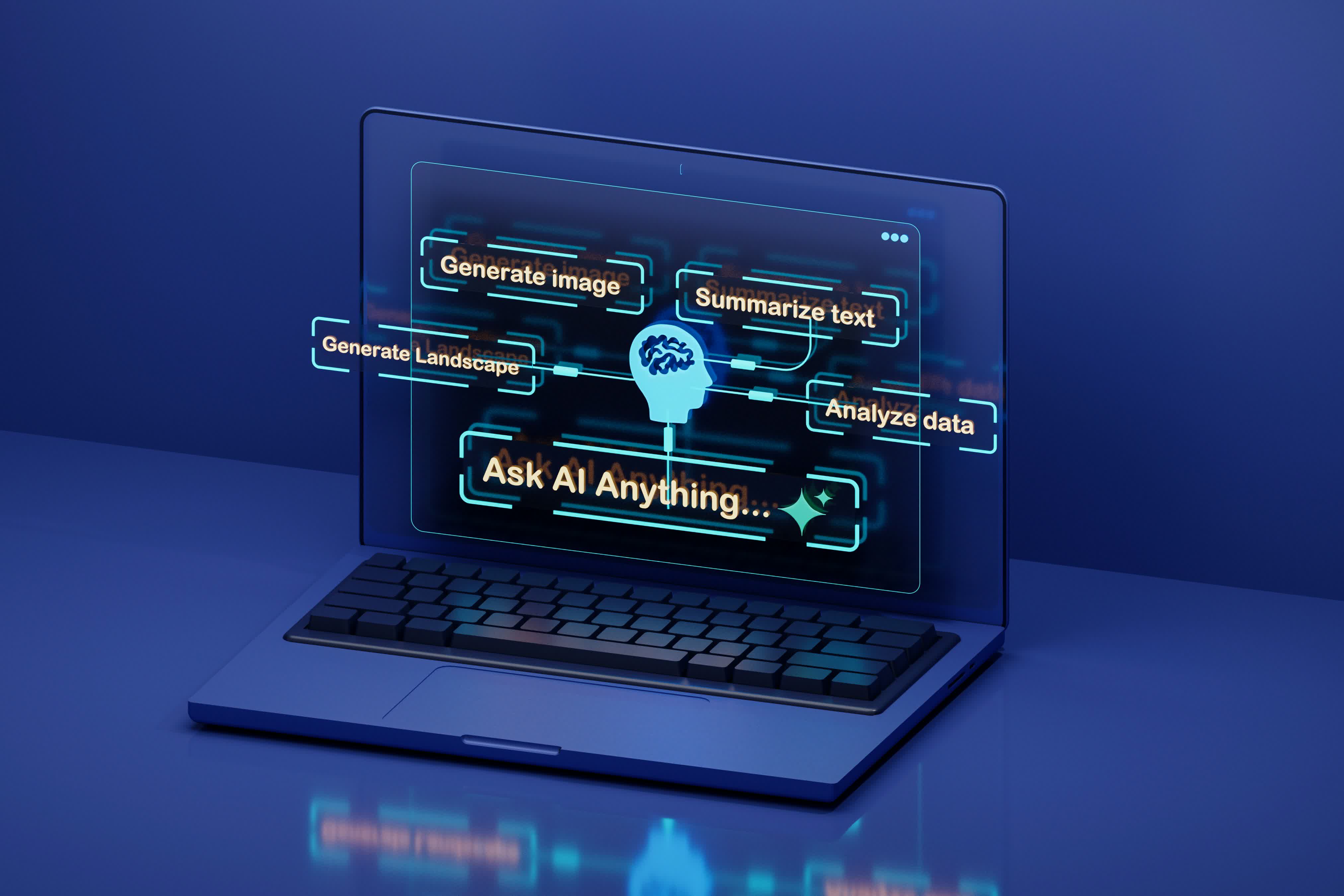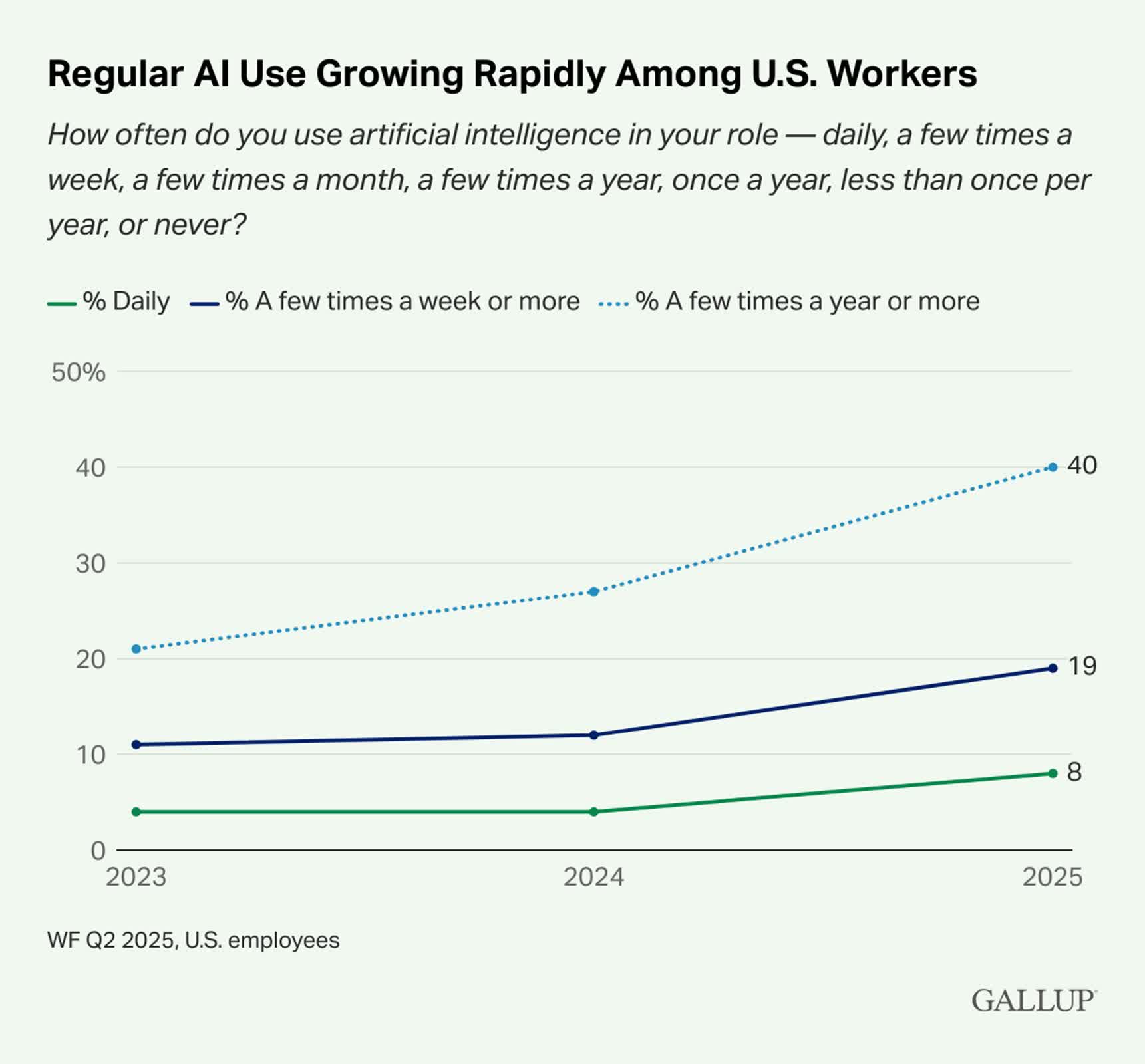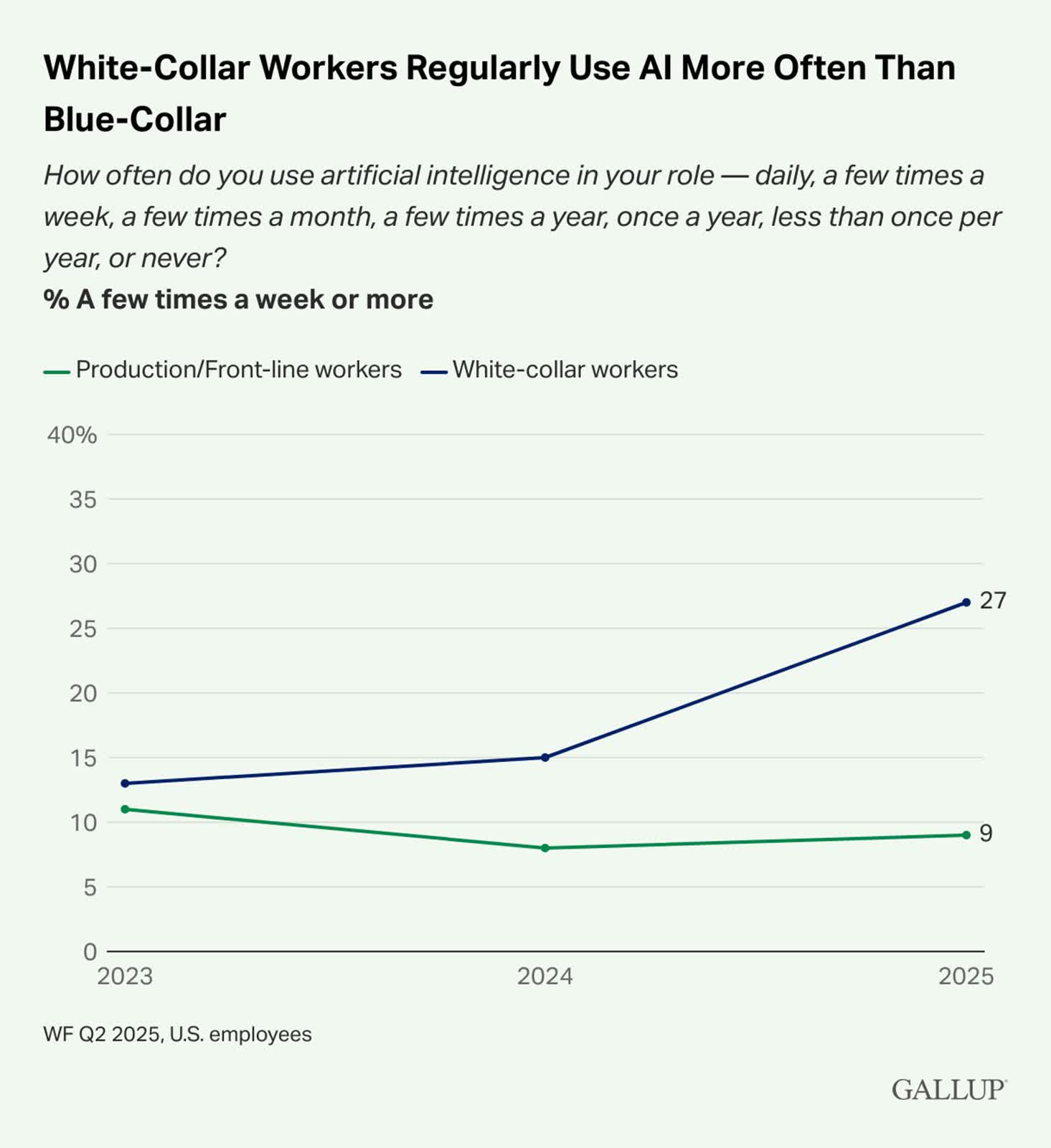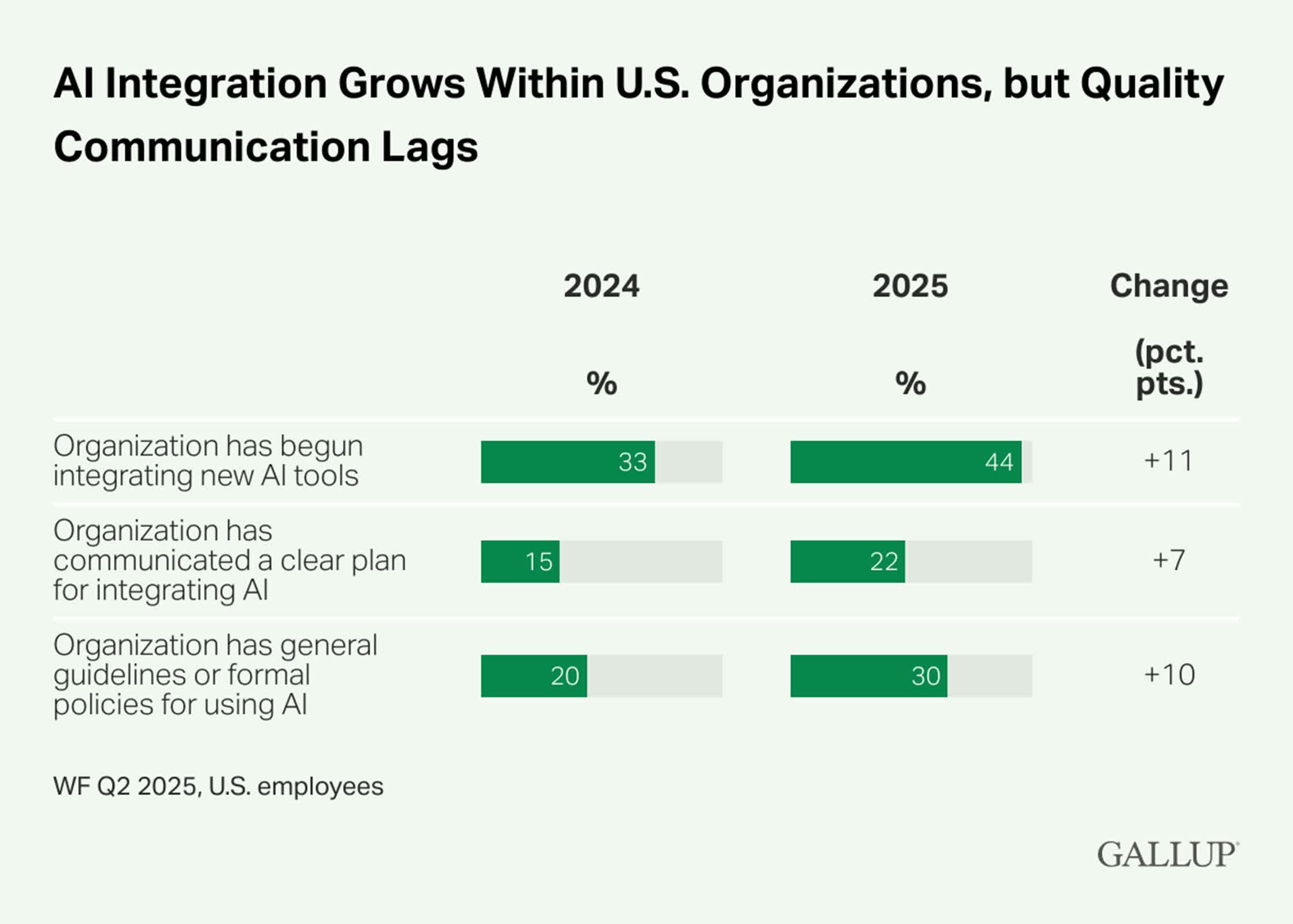In context: The use of GenAI in the workplace is evolving at a breakneck pace. Two new reports – one from Gallup and another from Salesforce AI Research – paint a picture of both growing enthusiasm and persistent challenges as organizations and their employees adapt to this technological shift. Together, these studies reveal a central theme: while AI is being embraced more widely than ever, the gap between its promise and practical performance remains a significant hurdle for businesses and workers alike.
Gallup's latest research finds that the use of AI among US employees has nearly doubled over the past two years. In 2023, just 21 percent of workers reported using AI in their roles at least a few times a year; by 2025, that figure has soared to 40 percent. Frequent use – defined as a few times a week or more – has also nearly doubled, climbing from 11 percent to 19 percent. Daily AI use, while still a minority behavior, has doubled in the past year alone, reaching 8 percent.
This surge is most evident among white-collar professionals. Twenty-seven percent of white-collar employees now report frequent AI use, up 12 points from last year, with technology, professional services, and finance leading the way. In contrast, frontline and production workers have seen little change, with frequent AI use actually slipping slightly from 11 percent to 9 percent over the same period.
Leadership roles are also more likely to embrace AI. One in three managers of managers use AI several times a week or more, compared to just 16 percent of individual contributors.
Yet, despite this rapid adoption, most employees do not feel their jobs are under immediate threat from automation. Only 15 percent believe AI or robots are likely to eliminate their roles within the next five years, a figure unchanged from previous years, though concern is somewhat higher in sectors like technology, retail, and finance.
A striking finding from Gallup is the disconnect between AI integration and organizational guidance. While 44 percent of employees say their workplace is rolling out AI, only 22 percent have received a clear plan or strategy. Just 30 percent report the existence of any guidelines or formal policies, leaving many to navigate this new terrain without clear direction.
The most common challenge cited is the lack of a clear use case or value proposition, and only 16 percent of AI users strongly agree that the tools provided are truly useful for their work.
Gallup's data underscores that leadership plays a crucial role in determining how comfortable and prepared employees feel about AI. Workers who say their leaders have communicated a clear AI strategy are three times as likely to feel very prepared to work with the technology and more than twice as likely to feel comfortable using it.
The research also shows a stark contrast in perceptions of AI's value: 68 percent of employees with firsthand experience using AI to interact with customers believe it improves those interactions, compared to just 13 percent among non-users.
While Gallup's findings highlight the human side of AI adoption, Salesforce AI Research turns the spotlight on the technology itself, finding that despite advances, AI agents still fall short of what real-world enterprise scenarios demand.
The Salesforce study found that even the best LLM agents succeed on only about 58 percent of single-turn business tasks – those that require just one step to complete. When tasks become more complex and require multi-turn interactions, such as follow-up questions or clarifications, success rates plunge to around 35 percent.
Workflow execution tasks, where agents follow clear rules, are the easiest for current models, with top performers reaching over 83 percent success. However, policy compliance, textual reasoning, and database queries remain significant weaknesses.
A particularly troubling finding is the near-total lack of confidentiality awareness among AI agents. When asked to handle sensitive information, these systems almost never refuse, unless given explicit instructions to do so. While adding confidentiality prompts can improve their ability to refuse inappropriate requests, this often comes at the expense of overall task performance, highlighting a difficult trade-off between safety and utility.
The research also shows that models with stronger reasoning abilities generally perform better across all tasks, and that agents who ask more clarification questions in multi-turn scenarios tend to achieve higher success rates.
Some models, such as Gemini-2.5-pro and Gemini-2.5-flash, offer a good balance between performance and cost, making them attractive for practical use, but the overall gap between AI capabilities and business needs remains wide.
Both reports agree that while AI is making significant inroads into the workplace, the journey is far from complete. Gallup's findings suggest that greater clarity, communication, and training from leadership are essential for employees to truly benefit from AI tools. Meanwhile, Salesforce's research makes clear that the technology itself still has a way to go before it can reliably handle the full complexity – and responsibility – of real business environments.



